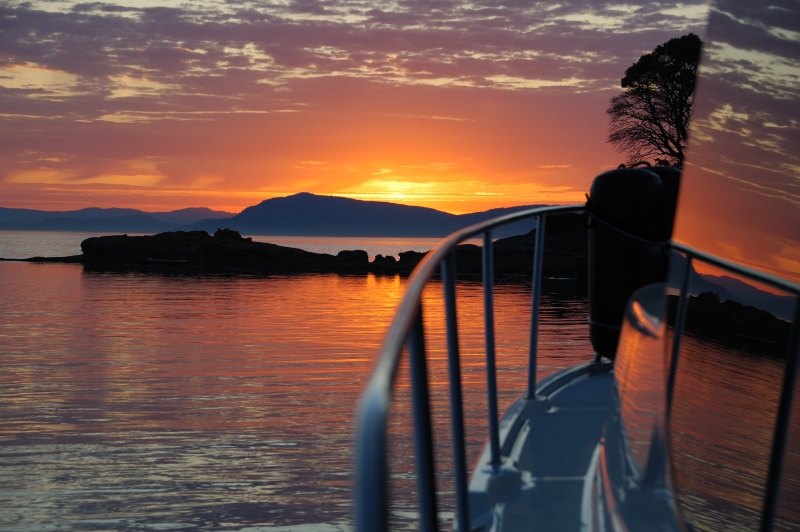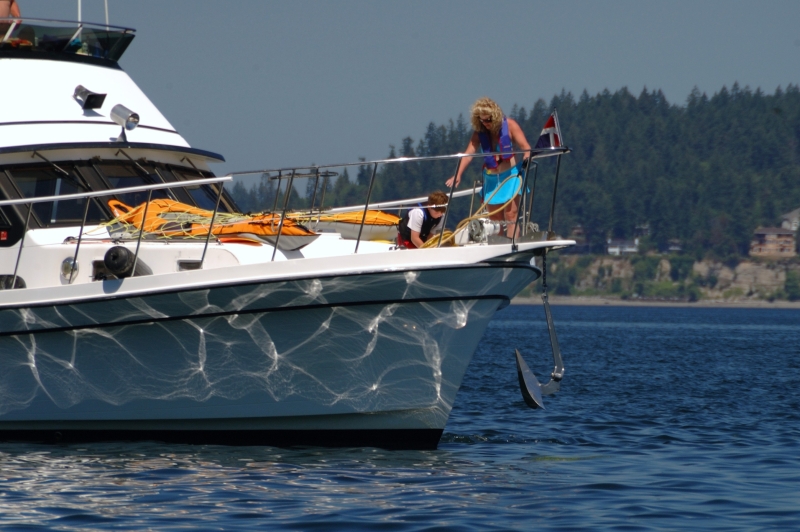When (Anchor) Size Does Matter
14th March 2023
Anchoring can be a humbling experience, even for seasoned skippers. But the use of the proper style oversize ground equipment eases the process and makes you look like a pro.
When selecting an anchor, you have three styles to choose from.
The fluke style is light and easy to weigh, it stows flat and holds well in mud or sand. Its excellent holding power-to-weight ratio means you can use a lighter anchor compared to other types, but it doesn’t hold well in grassy or rocky surfaces.
Plow and scoop anchors hold more effectively in grass, mud, and sand. They do not have projecting flukes that foul easily, but their shape makes stowing them more awkward (a bow-roller or bowsprit is the best solution). Heavier powerboats and cruising sailboats often use plows as primary anchors.
Claw anchors are also a great choice as they set easily and perform well in most conditions. They set easily in most bottom types but struggle with hard bottoms like clay or in heavy grass.

Proper ground gear can provide a solid night’s rest
Choose an anchor that’s the right size for your boat and the locations and weather where you anchor. Take the anchor manufacturer’s suggested sizes into account, consider the sea bottom conditions.
Weight is important, but what you’re looking for when buying an anchor is holding power, which may have little relation to the anchor’s size and weight. When an anchor penetrates the surface of the seabed, suction created by the bottom material, plus the weight of the material above the anchor, creates resistance.

With the proper ground tackle, even a kid can set the hook
You have three anchor material options to choose from: galvanized steel, stainless steel, or lightweight aluminum/magnesium. Most boaters choose a galvanized anchor for cost reasons, with the added advantage of having the highest tensile strength.
Experience tells us that lightweight anchors will hold as well as their heavyweight brethren once they’re down and set. However, when the weather conditions are rambunctious, it’s not easy to get them set. Due to lightweight construction, these anchors tend to “wander” to the bottom. They won’t bite in as solidly or as quickly as heavy anchors, so they take longer to set. Because they are light and easy to manage, they’re ideal in calmer conditions.
Type of anchor used isn’t as important as its weight and the amount of chain rode. It’s also important to have plenty of backup chain and more than the recommended scope. I’ve always preferred to carry a heavy Scoop or Plow type anchor backed by a length of chain at least equal to that of the boat, but the more chain the better. By heavy, I recommend an anchor for a vessel 10-feet larger in length than the boat it is going to be used on. Every anchor manufacturer has their anchor size recommendation based on the boat’s type and size. For example, the anchor manufacturer Lewmar recommends a 22-pound Delta anchor for a 40-foot vessel. My recommendation based on several years of experience is the next size up on the chart, a 35-pound anchor with 200’ of 5/16” chain backed with 100’ of 5/8 nylon line. This set of ground equipment has provided years of drag free coastal anchoring.
Chain has several benefits over a nylon rode, including added weight for less required scope, chafe and wear resistance, and high strength. It also – due to its weight – lowers the angle of pull on the anchor, which helps it to set and hold more firmly into the bottom.
Chain is available in three general varieties:
-High-Test is made from high-carbon steel. It’s the preferred chain for anchoring or windlass applications, and has twice the working load of BBB chain, so you can use a smaller size with the same strength.
-Proof Coil and BBB made from low-carbon steel has a uniform pitch short link and works well on windlass gypsies. BBB used to be the most popular type for windlass designs of the past but has since been replaced by High – Test. Proof Coil does not have a uniform pitch and does not work with anchor windlasses.
-Transport Chain has an extremely high strength-to-weight ratio, is substantially stronger than High Test, and resists wear because of its exceptional hardness properties. However, it’s compatible with very few windlasses.
The combination of an oversized anchor and chain rode properly secured to the bottom will provide countless nights of worry-free sleep in all weather conditions. Hopefully after reading this post, you’ll have an easier time next time you’re out on the water.


